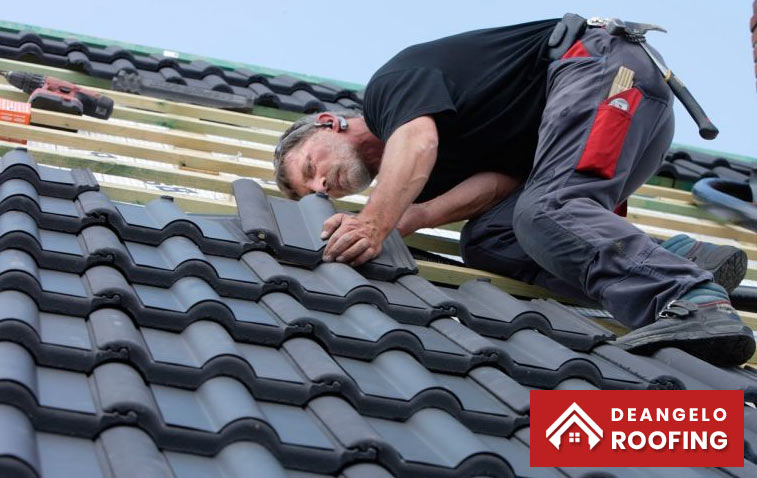Roof Replacement Costs for a 3000-Square-Foot Home: What to Expect
Replacing your roof is a big responsibility. The process can be quite complicated, especially when your home is spread over an area of 3000 square feet. The roof not only serves to cover the building, but it also protects your home from adverse effects of the weather. For this reason, it is very important to have the right information when deciding to replace the roof. When the roof reaches its old age or its condition deteriorates, there is no other option but to replace it. With proper planning, unnecessary expenses can be avoided and quality can be maintained in the roof replacement process.
There are many factors involved in replacing the roof of a 3000 square foot home, which affect the cost. The size of the roof, the material used, the cost of labor, and other unforeseen expenses are included in the total cost of roof replacement. It is your responsibility to make the right decision keeping all these factors in mind so that you can work within budget.

Basic Cost Factors
The main basis of roof replacement cost is the size of the roof and the material used on it. These are the two major factors that affect the total cost. If your roof area is large, more material and labor is required, which increases the cost. Apart from this, the structure and condition of the roof also affect the cost.
Square Footage and Its Direct Impact on Cost
The larger the area of the roof, the higher is its cost. For example, a 3000 square foot roof will require more material, and workers will also have to spend more time and effort. Therefore, a larger roof means more material and labor costs. The process of replacing a roof in a large area can be complicated, as it takes more time and the amount of material also increases. This directly affects the total cost.
The Role of Roofing Materials in Determining Price
The roof material plays an important role in the total cost. Different types of materials can be used for roof construction, and each material has its own cost. Asphalt roofing is affordable, while metal or tile roofing is expensive. The type of material used determines the quality of your roof and its longevity. Along with the cost of the material, the cost of its maintenance and repairs should also be taken into account.
Material Options and Costs
Selecting the material is an important step when replacing a roof. Different types of materials have different prices and durability. The climate your roof is in also plays an important role in material selection. Choosing the right material will not only make your roof durable, but it will also balance your costs.
Breakdown of Costs for Common Roofing Materials
There are many types of materials available for roof replacement, and each material has a different cost.
- Asphalt Shingles: Asphalt roofs are the most common and are usually inexpensive to install. They are readily available and have low maintenance.
- Metal Roofing: Metal roofs are a little more expensive, but they are more durable. Metal roofs last a long time and do not require special maintenance.
- Tile Roofing: Tile roofs are very attractive and durable, but they cost more and require skilled workers to install.
- Wood Shingles: Wood roofs give a home a natural and attractive look, but they are more expensive than other options and require more maintenance.
Advantages and Disadvantages of Each in Terms of Cost Efficiency
Each material has its own advantages and disadvantages. Asphalt roofs are inexpensive and easy to install, but they have a short lifespan and may need to be replaced sooner. Metal roofs are expensive, but they have a long lifespan and are durable. Tile roofs are beautiful, but they are expensive to repair. Wood roofs are also durable, but they require more maintenance.
Labor Costs
Roof replacement involves the cost of labor along with materials. The cost of workers varies according to their skill and experience. Labor costs may be higher if the roof is large or has a complex structure. In addition, labor costs vary from region to region.
How Labor Costs Can Vary by Region and Contractor
Labor costs vary by region. The demand for labor is higher in big cities, which increases the cost of workers. On the other hand, labor costs may be lower in smaller towns or rural areas. In addition, experienced workers cost more because they can complete complex work quickly and correctly.
Importance of Skilled Labor in Roof Replacement
Roof replacement requires skilled workers. Doing the job correctly not only makes the roof last longer, but also reduces its maintenance costs. Skilled workers install the roof correctly and can identify and fix any problems in time. This can save you from later expenses.
Removal and Disposal Fees
The process of replacing a roof also involves removing the old roof, which also costs money. Additional labor and resources are required to remove and dispose of the old roof. Additionally, proper disposal of the roofing material is important as per environmental and regulatory requirements.
Costs Associated with Removing the Old Roof
The cost of removing an old roof depends on the condition of the roof and its material. If the roofing material is heavy or complex, it takes more labor and time to remove it, which increases the cost. Additionally, a fee is also charged for disposing of the removed material, which affects the total cost.
Environmental and Regulatory Considerations in Disposal
It is important to follow environmental regulations when removing roofing material. Some materials can be harmful to the environment, which require special procedures to be followed for disposal. Additionally, a disposal process may need to be completed according to local regulations, which may also involve additional charges.
Structural Repairs
Sometimes the roof structure may also need repairs when replacing a roof. If the roof structure has weakened, it is necessary to repair it. This ensures the long-term durability of the roof and maintains the safety of the roof.
Additional Costs for Repairing Underlying Roof Structures
If the roof structure has deteriorated, it may cost additional money to repair it. This may be to the wood, beams or other structural parts underneath the roof. Such repairs are important for the longevity and safety of the roof and cannot be ignored.
Identifying Potential Repairs During Initial Inspections
It is important to conduct an initial inspection before replacing the roof. This reveals the condition of the roof structure and if any problem is found, it can be repaired in time. This can avoid later expenses and problems and ensure the safety of the roof.
Permitting and Fees
Permits are required to replace a roof according to local regulations. Permits are required to make the roof replacement process legally correct, and this requires contacting local authorities. Obtaining permits involves various documents and paying fees.
Required Permits for Roof Replacement and Their Costs
Permits are required to replace a roof from local authorities. The cost of permits varies according to the size, type, and area of the roof. Permits are not only necessary from a legal perspective, but also ensure that the roof replacement process is in accordance with local regulations.
How Local Regulations Affect the Permitting Process
Each region has its own local regulations, which affect the permitting process. The process of obtaining a permit is simple in some areas, while it can be complex in others. It is important to follow local regulations so that you do not face any legal problems in the future.
Additional Installations
Some additional installations can also be done during a roof replacement, such as insulation, ventilation systems, or skylights. All these installations enhance the functionality and beauty of the roof. These additional features also help to increase the energy efficiency of the roof.
Costs for Installing Insulation, Ventilation Systems, or Skylights
Insulation helps to control the heat and cold of the roof, which saves energy. Ventilation systems improve air flow within the roof and ensure the longevity of the roof. Skylights provide natural light, which makes the house more attractive. The cost of all these installations adds to the overall cost of the roof.
How These Additions Contribute to Overall Costs and Benefits
Additional installations increase the functionality of the roof and long-term savings. Insulation and ventilation systems reduce electricity consumption, while skylights bring natural light into the house. All these installations help to increase the beauty and functionality of the roof.
Unforeseen Expenses
Some unforeseen expenses may also arise during the roof replacement process. These may include conditions such as structural problems, material shortages, or bad weather. Therefore, it is important to budget for these unforeseen expenses in advance.
Common Unexpected Costs During Roof Replacement Projects
Structural problems, weather conditions, or material shortages may lead to unforeseen expenses during roof replacement. It is wise to be prepared for such situations and include some extra money in the budget.
Tips for Budgeting for Contingencies
It is a good idea to budget for unforeseen expenses. It is wise to add 10-15% extra money to the roof replacement budget to deal with any unforeseen expenses. This can help the project complete without any interruption.
Cost-Saving Tips
Some measures can be taken to reduce the cost of roof replacement process. Comparing the cost of the right materials, labor, and replacing the roof at the right time can save you money.
Ways to Reduce Expenses Without Compromising Quality
Compare the prices of materials and labor for roof replacement. Replacing your roof at the right time can help you avoid emergency expenses. Additionally, regular roof inspections and maintenance can help prevent major expenses in the future.
Advice on Getting the Best Value for Your Investment
When investing in a roof replacement, pay attention to its quality. Using cheap materials may seem tempting, but it can cause long-term damage. Choosing the right materials and labor can help you get a long-lasting roof, protecting your investment.
FAQ
Yes, it is necessary to obtain a permit before replacing a roof. Permit rules are different in every area, so it is mandatory to get a permit by contacting the local authorities.
It usually takes 1-2 days to remove a roof, but it depends on the size and material of the roof. If the roof is large or in poor condition, it may take longer to remove it.
Yes, weather affects roof replacement. Roof replacement can be difficult during rainy or snowy weather. Therefore, it is important to take care of weather suitability for roof replacement.
Yes, regular maintenance is required after roof replacement. It is important to keep the roof clean and check it regularly so that any kind of problem can be fixed on time.

